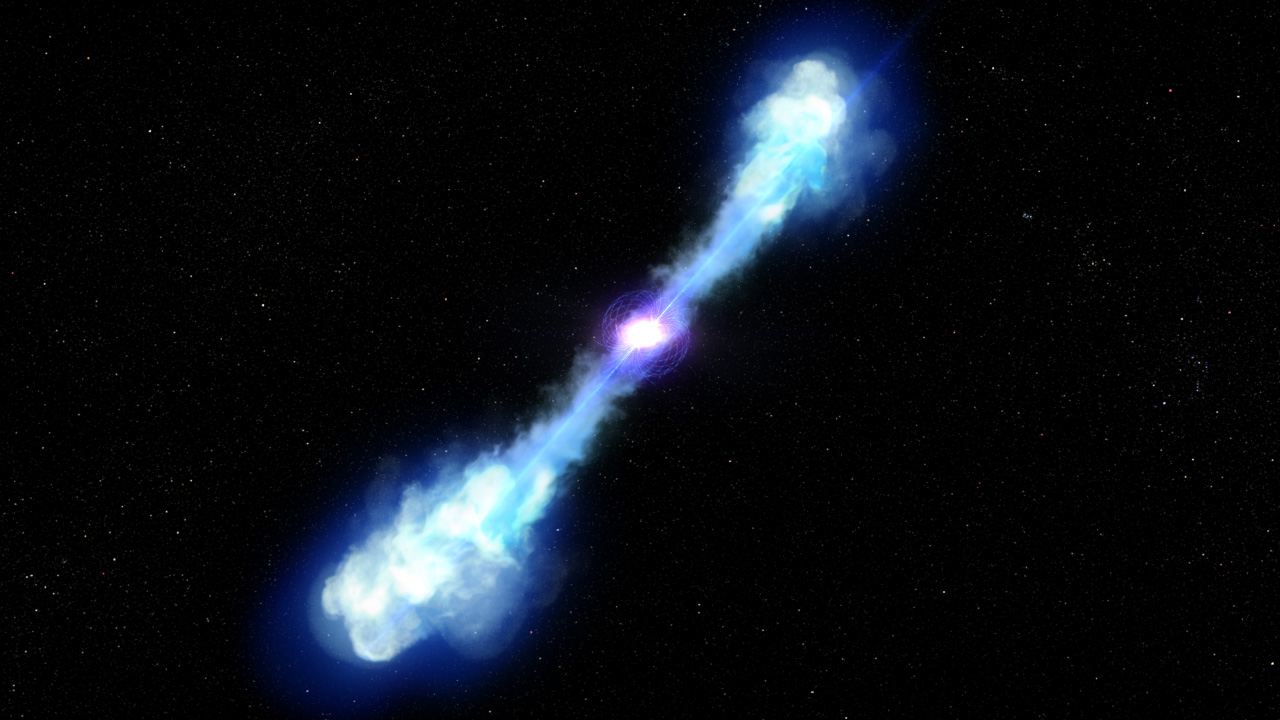Scientists spot a 'kilonova' flash so bright they can barely explain it
It may be from a magnetar born in a neutron star crash.
Scientists may have caught the blinding flash of two dense neutron stars colliding to form a strange magnetic star.
The first sign of the massive event was a gamma-ray beacon that appeared in telescope data on May 22, prompting astronomers to assemble their best instruments. That response was important: Scientists believe gamma-ray bursts usually stem from neutron stars colliding so they are eager to see as many views of such fireworks as possible. But as observations came in, researchers realized there was something strange going on: The flash included far more infrared light than predicted, 10 times more. The scientists behind the new research think that discrepancy may mean the crash produced something unexpected.
"These observations do not fit traditional explanations for short gamma-ray bursts," Wen-fai Fong, an astronomer at Northwestern University in Illinois and lead author on the new research, said in a statement. "Given what we know about the radio and X-rays from this blast, it just doesn't match up."
Related: Gamma-ray universe: Photos by NASA's Fermi Space Telescope

Astronomers used a host of facilities to study the event, including NASA's Swift Observatory in space, the Very Large Array in New Mexico and the Keck Observatory in Hawaii, but it was the Hubble Space Telescope that spotted the extremely bright infrared radiation from the burst that told scientists something particularly strange was going on.
"The Hubble observations were designed to search for infrared emission that results from the creation of heavy elements — like gold, platinum, and uranium — during a neutron-star collision," Edo Berger, an astronomer at the Center for Astronomy jointly run by Harvard University and the Smithsonian Institution and co-author on the new research, said in the statement. Neutron stars are the superdense remains of exploded stars and the bright afterglow from a collision of two such objects is called a kilonova.
"Surprisingly, we found much brighter infrared emission than we ever expected, suggesting that there was additional energy input from a magnetar that was the remnant of the merger," Berger said. "The fact that we see this infrared emission, and that it is so bright shows that short gamma-ray bursts indeed form from neutron star collisions, but surprisingly the aftermath of the collision may not be a black hole, but rather likely a magnetar."
Breaking space news, the latest updates on rocket launches, skywatching events and more!
A magnetar is a cosmic curiosity, an unusual class of supermagnetic neutron stars. But scientists have long wondered how magnetars become so magnetic, so observing a possible formation event is particularly valuable for scientists.
"We know that magnetars exist because we see them in our galaxy," Fong said in a second statement. "We think most of them are formed in the explosive deaths of massive stars, leaving these highly magnetized neutron stars behind. However, it is possible that a small fraction form in neutron star mergers. We have never seen evidence of that before, let alone in infrared light, making this discovery special."
And this time, researchers were able to catch an early enough view of the blast to catch the fading infrared peak in all its glory.
"Amazingly, Hubble was able to take an image only three days after the burst," Fong said. "You need another observation to prove that there is a fading counterpart associated with the merger, as opposed to a static source. When Hubble looked again at 16 days and 55 days, we knew we had not only nabbed the fading source, but that we had also discovered something very unusual."
The research is described in a paper announced for publication in The Astrophysical Journal today (Nov. 12) and available to read on the preprint server arXiv.org.
Email Meghan Bartels at mbartels@space.com or follow her on Twitter @meghanbartels. Follow us on Twitter @Spacedotcom and on Facebook.

Meghan is a senior writer at Space.com and has more than five years' experience as a science journalist based in New York City. She joined Space.com in July 2018, with previous writing published in outlets including Newsweek and Audubon. Meghan earned an MA in science journalism from New York University and a BA in classics from Georgetown University, and in her free time she enjoys reading and visiting museums. Follow her on Twitter at @meghanbartels.
